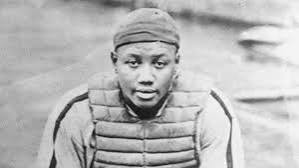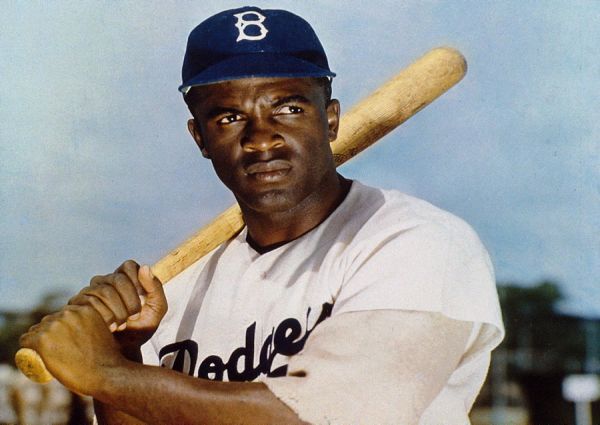MLB celebrates Jackie Robinson Day while Black players, managers and front office executives remain almost nonexistent.
Today is Jackie Robinson Day, a day when everyone in MLB wears No. 42 in honor of baseball’s legendary color-barrier breaker. MLB is also commemorating Jackie’s 100th birthday this year with events and festivities scheduled all across the country, culminating in December with the opening of the Jackie Robinson museum in New York.
.@MLB is honoring Jackie Robinson in a place he once called home. pic.twitter.com/VYFVyVhBi4
— MLBDevelops (@MLBDevelops) April 2, 2019
This day always seems to illuminate baseball’s weird hypocrisy regarding race. The league is constantly celebrating Robinson’s impact on baseball and society. The cultural and educational contributions of the Jackie Robinson Foundation continues his selfless legacy of helping others along a journey of hope that will last far longer than the 53 years he spent on this earth (1919-1972). Despite all of this, it seems that Jackie’s impact has faded over the years when it comes to directly inspiring Blacks in pro baseball.
On April 15th, 1947, Jackie Robinson made his debut with the Brooklyn Dodgers, breaking the MLB color barrier.
Today on #JackieRobinsonDay we continue to celebrate his life and legacy ✊🏾 pic.twitter.com/bdLvE0DIM9
— The Shadow League (@ShadowLeague) April 15, 2019
The old school barbershop conversations about baseball’s brightest black stars have given way to a constant analysis of why African-Americans don’t dig baseball. This year, MLB has an African-American population of only 7.7%. There are 68 African-American players among the total of 882 players on opening-day rosters, injured lists and restricted lists, according to research by USA TODAY Sports.
11 teams don’t have more than one African-American player on their 25-man roster, including three teams that don’t even have one. There are three African-American players on active rosters in the entire National League West.
30 years ago, MLB’s last African-American superstar (not named Derek Jeter) broke into the Major Leagues with an infectious game, boasting a multiplicity of skills and a captivating personality that made baseball fun. Ken Griffey Jr. was a celebrity, not just a baseball star. “The Kid” was known to the sports world as the face of baseball.
He was a human highlight film, who combined speed, power, freakish athleticism and a genuine passion for the game to inspire young Black kids to pick up a bat and glove.
There were other players who were giants in the game, but most non-baseball fans couldn’t pick them out of a lineup.
Griffey was special. The best brother balling at a time when there were twice as many African-American players in baseball. There were 15 African-American players alone on the 1989 All-Star team. There were just seven in total at last year’s All-Star Game in DC.
Reflecting on the careers of past Black Knights such as Robinson, Hank Aaron, Willie Mays, Eddie Murray, Dave Winfield and Ricky Henderson makes Jackie Robinson Day bittersweet — perplexing even. Aaron is baseball’s “official” home run champion, a living example of how vital the spirit of the African-American athlete was to the science of baseball.
While in the Sunday Night Baseball booth, Hank Aaron revealed an old trade secret about the bats he used 👏 pic.twitter.com/0jTeyjqMHp
— ESPN (@espn) April 15, 2019
Watching Aaron speak the gospel evokes a familiar question- How can a sport that’s played such a vital role in the advancements of African-Americans in sports and society have such poor diversity on the field, the front office and other leadership positions?
The NFL and NBA have risen in global popularity and youth sports has become big business as parents chase scholarships and pro dreams in a world where salary increases can’t keep up with booming inflation and costs of living.
Losing former Oakland A’s first-round pick Kyler Murray to football was a damaging blow for MLB because Murray was a ready-made star whose Heisman prowess had already elevated him to celebrity status.
By choosing MLB over football, he could have set a new precedent for young African-American athletes. Instead, he chose the latter.
On the college level, NCAA Baseball’s sorry number of scholarships offered (11.7) doesn’t help keep the best athletes in baseball either. In comparison, FBS football teams give 85 full rides. Under these circumstances, baseball would rarely be a first choice for an underserved student-athlete, no matter how much he loved baseball.
We know that money talks and people who can’t afford to pay for a Stanford education have to choose the opportunities that provide the most financial assistance.
Everybody has an explanation for the dilemma. It’s something that has been discussed ad nauseam. MLB has responded by instituting a variety of diversity initiatives. These programs have resulted in an increasing number of Black players in college and the minor leagues.
44 African-American players were drafted in the first round over the last seven years, including at least one player from MLB Reviving Baseball in Inner Cities program and Breakthrough Series, selected among the top five picks in the last three drafts.
Taylor Trammell is your 2018 @SiriusXM All-Star #FuturesGame MVP!
Congrats, @Taytram24! #RedsMiLB pic.twitter.com/Pnb8ijOMmU
— Cincinnati Reds (@Reds) July 15, 2018
Problem is, these players aren’t getting into MLB quick enough. Nobody wants to sit in the minors for three years before they can get the bag. And the ones that do make it, aren’t promoted in a way that would make a young kid take a Steph Curry jersey off and put a Mookie Betts one on.
Another reason why baseball has remained largely white is the fact that there’s just one African-American manager (Dave Roberts of the Los Angeles Dodgers) and baseball is in its third consecutive season without an African-American general manager.
As Black men have no influence on the personnel decisions made by MLB clubs, baseball is currently constructed racially, economically, culturally and systematically to exclude African-Americans from pursuing the sport.
It’s not intentional, but several forces are working against each other.
There is a real disconnect between the League office, which is constantly trying to promote diversity and encourage kids of color to play baseball free of charge, the front offices which have devalued the importance of the Black athlete in baseball and the fans who love the game unconditionally while realizing that something is missing.



